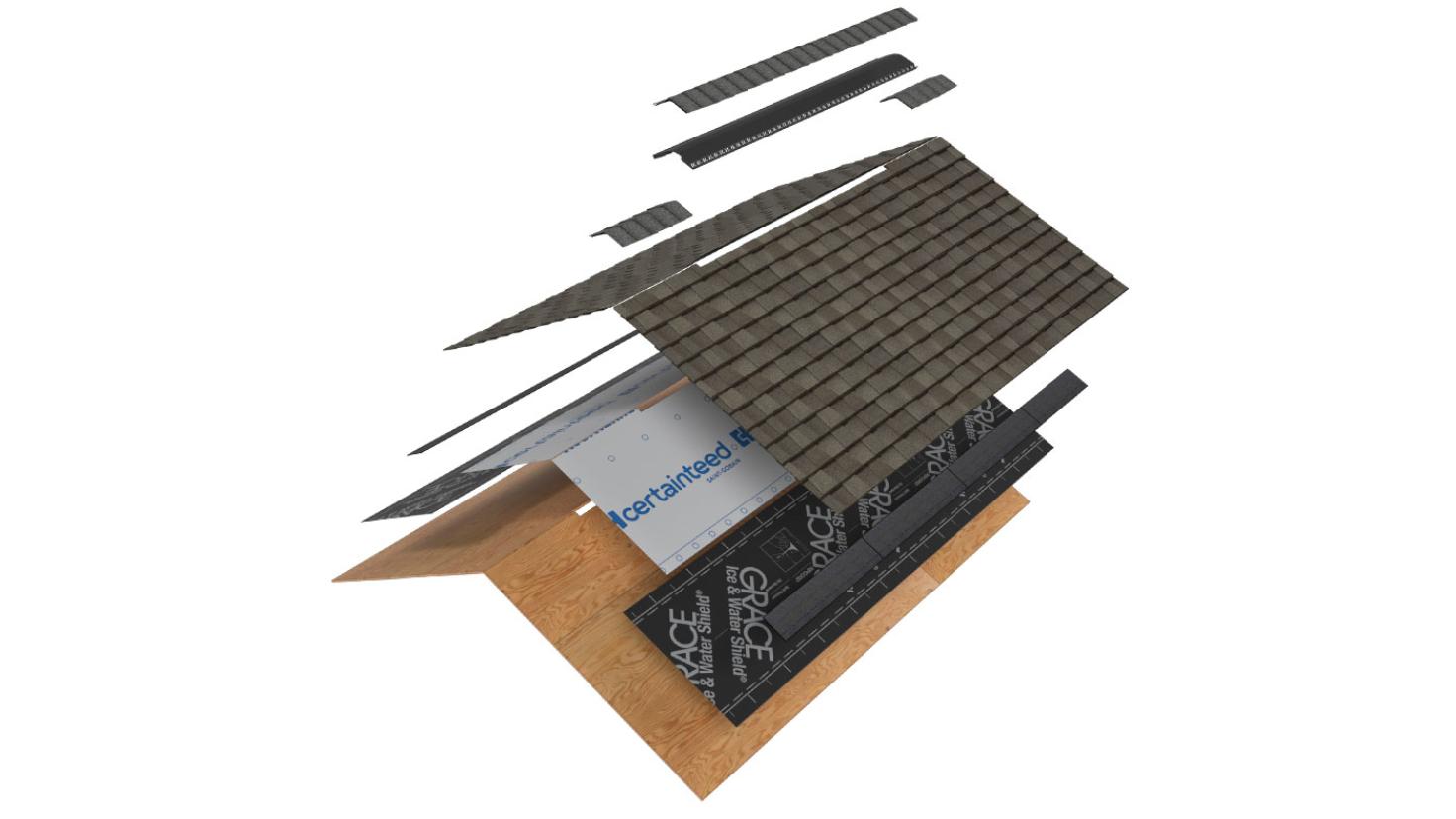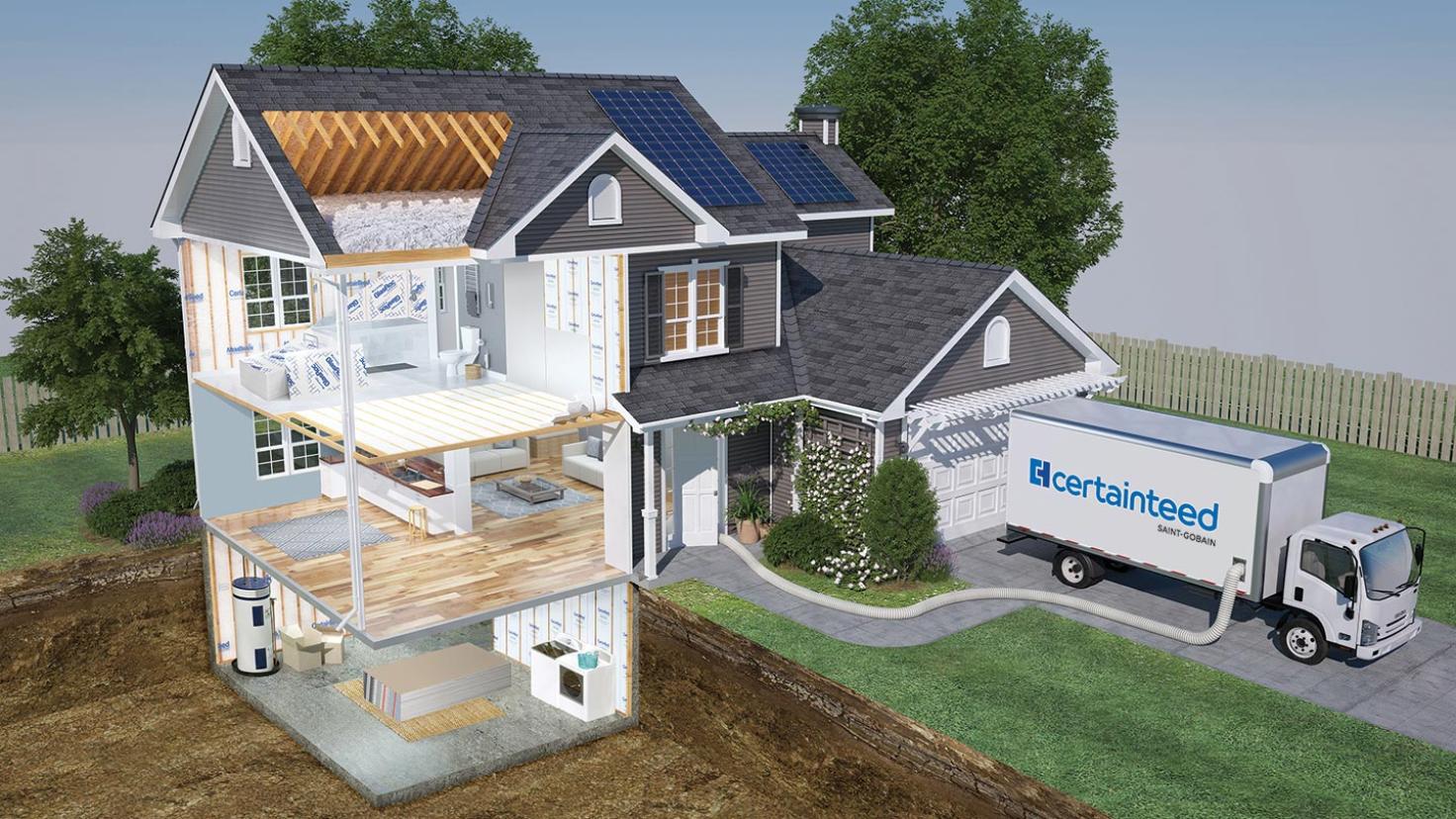Our Solutions
Effective moisture control strategies, including drainage systems, moisture barriers, and ventilation, are critical for preserving the long-term durability of the building as well as a safe, comfortable, and efficient indoor environment. Ensure the long-term integrity and performance of the structure by considering moisture management suitable to the local climate.
It's All Relative
The North American climate varies significantly from region to region, and it has a direct impact on building moisture management strategies. In other words, where you are affects what you need to do.
The Elements to Defend Against the Elements
Achieve maximum moisture management with easily integrated products that, when combined, maximize air flow, weather tightness, and indoor air quality.
Take it from the top down…

.jpg?crop=yes&k=c&w=320&h=213&itok=N9k3nzaL)
Landmark ClimateFlex shingles with Quadrabond and CertaSeal technologies

Grace Ice and Water Shield roofing underlayment

GlasRoc® Tile Backer is a wall and ceiling tile substrate
InsulSafe® SP fiberglass blowing insulation

MemBrain™ Continuous Air Barrier & Smart Vapor Retarder
Three Challenges We'll Help You Meet
From exterior to interior and places in between, take charge of these three factors to stay ahead of potential problems.
Temperature Control
Maintaining a consistent temperature doesn’t just lower costs, it prevents unwanted condensation from growing into larger health and structural hazards. Insulating walls and ducts is the key to consistency.
CertaWrap™ Weather Resistant Barrier is an added layer of protection against air and moisture damage. GlasRoc® Sheathing uses a water-resistant core and fully embedded glass mat for exterior applications. Insulsafe, InsulPure, and OPTIMA provide several options to keep cavities from leaking air and conditioned air.
InsulPure, SoftTouch, and Ultra*Duct Black Duct Board make sure condensation is minimized, and optimal HVAC efficiency is achieved.

Humidity Management
You know what the most common source of interior moisture buildup is? Not water. Water Vapor. Limit condensation by controlling it with materials that prevent water retention at every layer. Plan ahead with strategic material choices.
CertaSeal INT helps prevent air leakage that can bring in unwanted humidity.
Insulation such as InsulPure, OPTIMA, and InsulSafe helps prevent cavities from collecting moisture in unseen locations. GlasRoc Tile Backer is a substrate with a water-resistant core to meet the demands of high moisture areas.
.jpg?crop=yes&k=c&w=736&h=552&itok=bgdpzwS6)
Waterproofing
Intruding water will take—and make—many paths. Vapor barriers, sealants, and low-moisture retention materials ensure unwanted moisture stays out. Seal cracks to prevent buildup on surfaces and in cavities.
CertaSeal INT prevents any unwanted water from leaking through interior structures.
MemBrain™ is a patented continuous air barrier that remains tight in winter to keep moisture out; it also increases permeability in summer to let moisture escape, helping to keep walls dry. GlasRoc Tile Backer help prevent water intrusion in spaces exposed to water in a building.

Grace Ice & Water Shield®
Built to withstand the toughest challenges, Grace Ice and Water Shield has proven its worth in the most demanding climates. Whether you face heavy rain, snow, ice dams, or high winds, this powerful moisture barrier stands firm, shielding your home and family from potential disasters.








.jpg?crop=yes&k=c&w=272&h=164&itok=F7fIfjOR)
.jpg?crop=yes&k=c&w=272&h=164&itok=fXbnSN1g)
